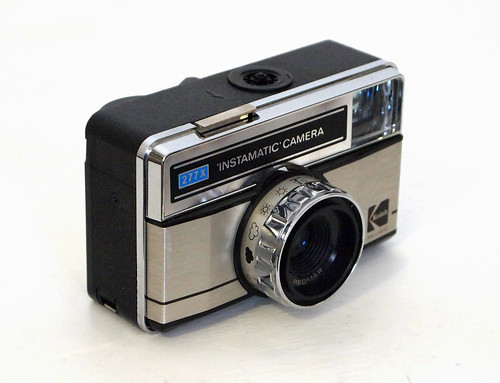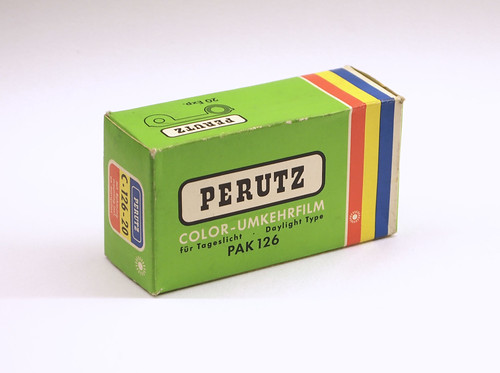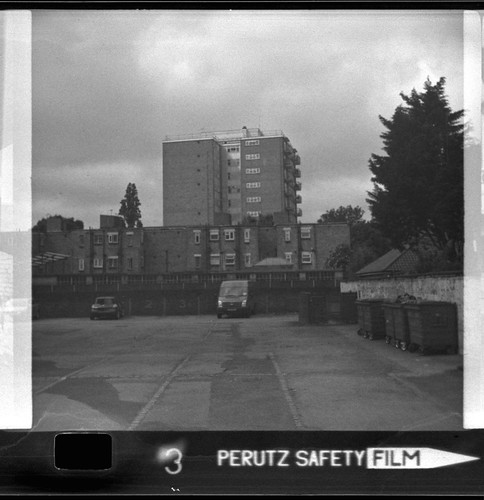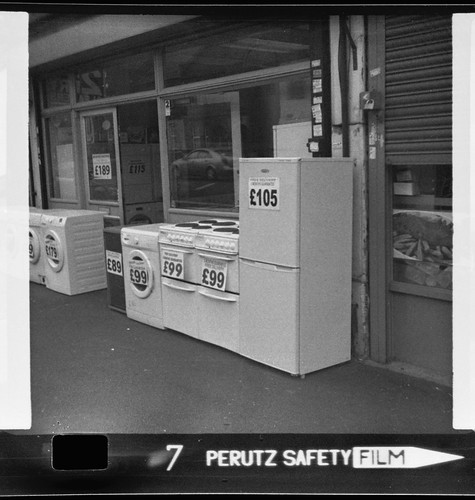 |
| Kodak Instamatic 277X Camera |
Like the '127 days' to encourage the use of the
127 format, yesterday, 12th June, for a '
126 day', I shot the last 126 film left from those I had bought at a
Paris flea market. I had previously used one of the films in a
Kodak Instamatic 50, and found all the results underexposed. As the
126 format was designed with inexpensive snapshot cameras in mind, most have a limited capacity to adjust settings for exposure, but to get results from a colour film nearly forty years old, I wanted to increase the exposure to counter the film's inevitable loss of sensitivity. I chose to use the
Instamatic 277X above in preference to the 50 (which has just two shutter speeds), as this has an adjustable aperture. Around the lens is a band with pictograms for lighting conditions on one side (from 'beach' to 'dark cloud'), and distances for flash on the other: turning this either way has the effect of opening the aperture, which is controlled by two blades giving a square aperture when in the central position, stopped down.
 |
| Perutz Daylight Type Colour Reversal Film |
I used
Perutz Daylight Type Colour Reversal Film, which has a develop before date of May 1974. Originally 64 ASA, I shot the whole film with the camera's aperture at its widest setting. I had wanted to shoot the film in full sunlight, but such was the weather yesterday that I simply went for a walk and tried to shot the frames when gaps in the clouds appeared.
As colour reversal, the Perutz film was originally for slides. The film was 'process paid' and
the box contains an envelope to return the film to Perutz for processing, no longer a possibility. The film also requires different chemistry to the
E6 reversal process still in use today, as the Perutz film was made for Agfa's C18 process (Perutz, a photographic company founded in the 19th century, was bought out by Agfa in 1960s). Incidentally, there's an advert for Perutz slide film on YouTube :
http://www.youtube.com/watch?v=sEYv_pbmcv4
Rather than attempt to develop the film as colour reversal film, it was easier to cross-process it as a black and white negative film. Inside the
126 plastic cartridge is a roll of paper-backed film on a plastic core, rather like any older rollfilm format. The film is the same width as 35mm, which means that it can be put onto a 35mm spool for developing. I used
stand development with Rodinal diluted 1:100, for 1 hour. Once developed, the film has a heavy yellow-green cast, but, by giving the film as much exposure as possible, this has resulted in usable negatives.






No comments:
Post a Comment